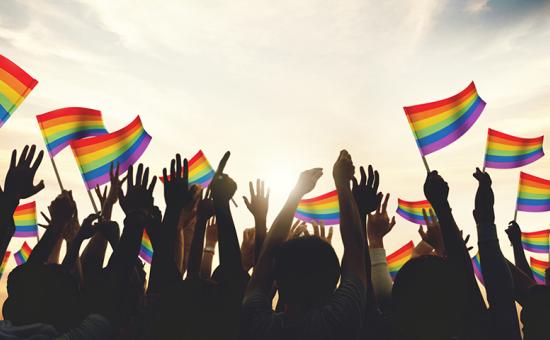What’s Pride Month?
06/01/2021
Every June, millions celebrate Pride Month across the country with parades, celebrations and performances. The month celebrates LGBTQ+ voices, history and culture and highlights the important markers in the movement to advance the rights of LGBTQ+ individuals.
For Pride Month, ISTA will feature topical blog posts with classroom resources and ideas for inclusion.
Origins of Pride Month
It’s often said that the first Pride event was a riot. On June 28, 1969, police raided a popular gay bar in New York City’s West Village called the Stonewall Inn. On this night, however, the patrons fought back against the police, starting what we now call the Stonewall Riots. Three key figures led these riots – Marsha P. Johnson, a Black, transgender woman and Sylvia Rivera and Stormé DeLarverie, activists and drag queens.
While police raids on gay bars were common in the 1960’s, Stonewall sparked a movement with protests occurring over the next several weeks and spurring the creation of two gay activist organizations to combat confrontational police tactics. By June 1970, three newspapers were established to promote the rights of gay men and lesbians and the first gay pride marches took place in major cities across the country including New York, San Francisco, Los Angeles and Chicago.
Health crisis raises awareness
Many Hoosier educators and students are familiar with Ryan White’s story. His activism on HIV/AIDS helped break down discrimination felt by those living with the disease.
In 1981, a rare lung infection was found in five young, healthy gay men living in Los Angeles. By the next year, there were roughly 270 reported cases of this same immune deficiency in gay men, of whom, 121 died.
Believed only to affect gay men, the government response to HIV/AIDS was tepid and only received widespread awareness following the death of Hollywood legend Rock Hudson from AIDS. The same year, 1985, White contracted AIDS from a blood transfusion to treat hemophilia.
White’s diagnosis resulted in a national conversation on HIV/AIDS, raising awareness, decreasing stigmatization and leading to increased research.
White died on April 8, 1990, from an AIDS-related illness. In 1990, President George H.W. Bush signed into law the Ryan White Care Act creating a federally funded program for people living with HIV/AIDS.
Recent fights for LGBTQ+ rights
In 2009, the Centers for Disease Control and Prevention lifted a ban, allowing immigrants with HIV into the country, and the Matthew Shepard Act was passed in Congress expanding the Federal Hate Crime Law to include crimes motivated by a victim’s sexuality or gender identity. The “don’t ask, don’t tell” policy was revoked in 2010 allowing gays and lesbians to openly serve in the military. And in 2015, the Supreme Court ruled that same-sex marriage was protected in the Constitution.
There is still work to achieve LGBTQ+ equality. In some states, same-sex couples cannot adopt children, gay men still cannot donate blood if they are sexually active, employers have the right to fire employees based on their sexual orientation and violence against the transgender community is at an all-time high.
Stand up for LGBTQ+ students
This Pride Month let’s learn about accomplishments of those in the LGBTQ+ community, but we also must remember how we got here and how much further we have to go.
If you want to raise awareness for Pride Month, add a frame to your Facebook profile picture. Click on your profile picture and select “Add a frame.” Search for “ISTA Pride Month Frame.” Select “Use as profile picture.”
Watch for more blogs this month.
